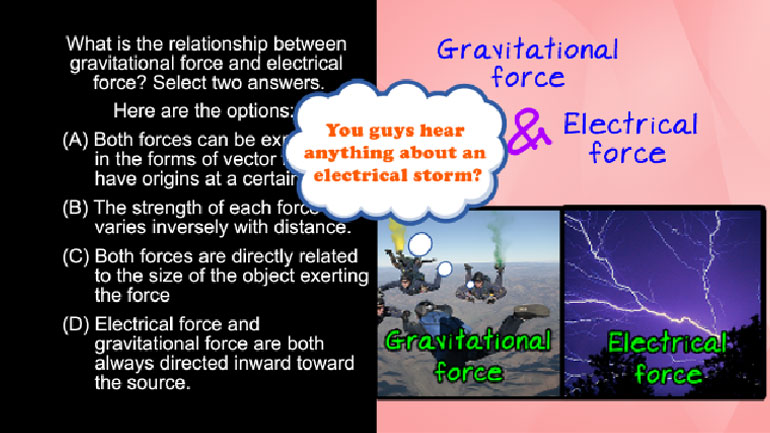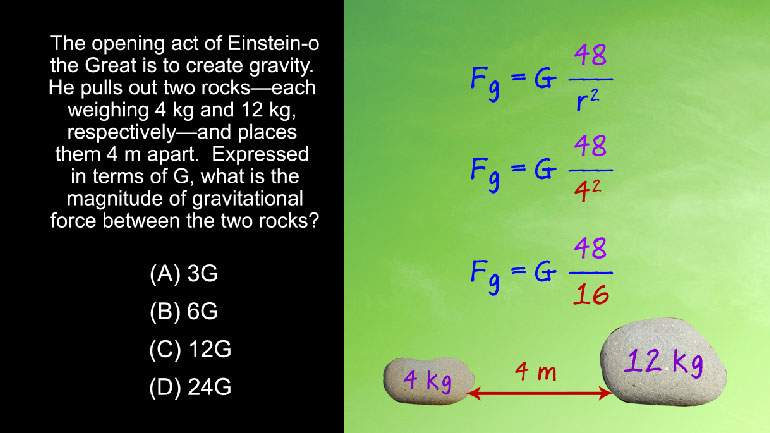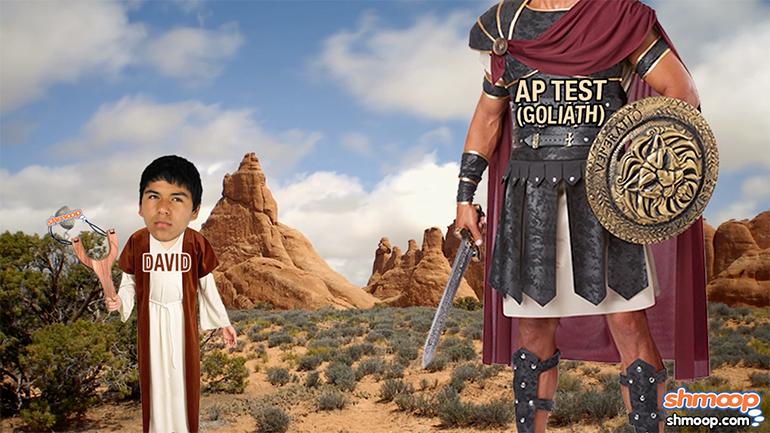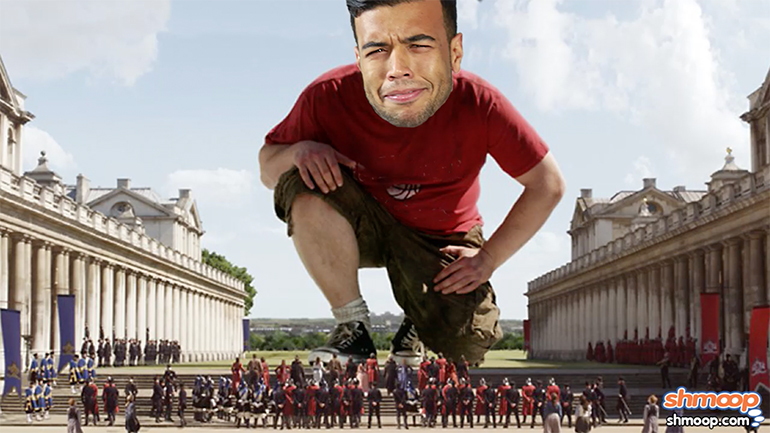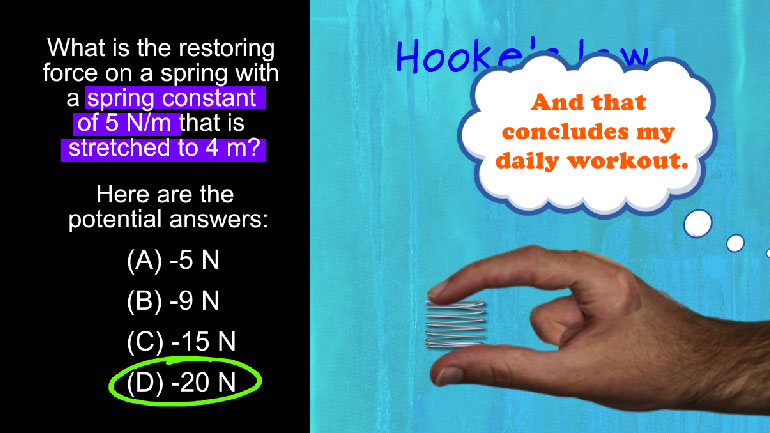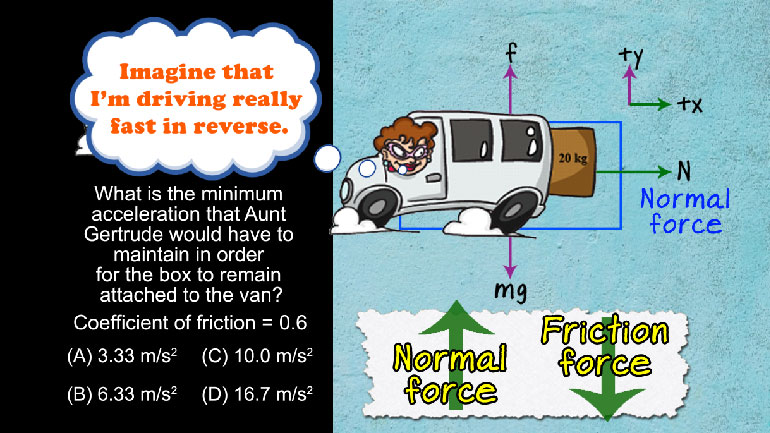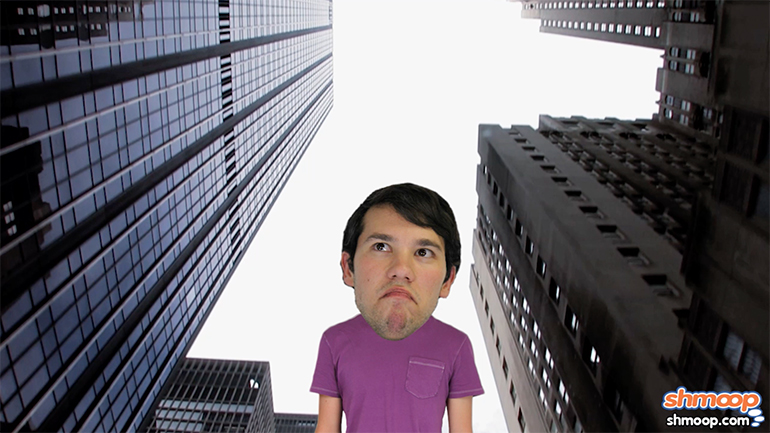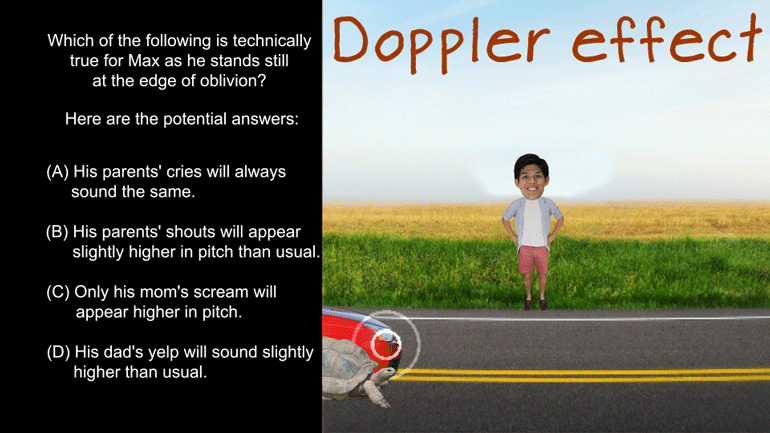ShmoopTube
Where Monty Python meets your 10th grade teacher.
Search Thousands of Shmoop Videos
Playlist AP® Physics 1: Object Interaction and Forces 13 videos
If there's one good thing about the heat death of the universe, it's that we'll all have an excellent excuse for dodging physics homework.
The real moral of the story here is just "don't get in the way of elephants or tigers." That is not the kind of kinetic energy you want to absorb.
Hi there. We'd like to wave hello to you, but the internet isn't letting us. So instead, accept this fun question about waves and physics! It's alm...
AP Physics 1: 3.3 Object Interaction and Forces 174 Views
Share It!
Description:
AP Physics 1: 3.3 Object Interaction and Forces. What is the minimum acceleration needed for the box to remain attached to the van?
Transcript
- 00:00
Thank you We sneak and here's your shmoop du jour
- 00:05
brought to you by vans which just aren't as groovy
- 00:08
as they used to be Check the falling image and
- 00:12
passage Nice hair glasses in your stuff All right What
- 00:20
is the minimum acceleration that aunt gertrude would have to
Full Transcript
- 00:23
maintain in order for the box to remain attached to
- 00:26
the van and hear the potential answers all about friction
- 00:30
Uh no There's A lot going on in this question
- 00:33
Well let's try to make it simpler on ourselves by
- 00:35
drawn up the little force diagram right here Okay we've
- 00:40
got one force the van going in the ex direction
- 00:43
And this question will label that in for normal force
- 00:47
to calculate that force we use our trusty formula force
- 00:50
equals mass times acceleration Then we have to force is
- 00:53
in the y direction there's gravity pulling down on the
- 00:56
box and friction pushing it up In order for the
- 00:59
box to not fall these two forces have to balance
- 01:02
each other out So the force along the y axis
- 01:05
is equal to mass times gravity plus friction Well because
- 01:09
the forces air acting in different directions the first part
- 01:12
of the equation mass times gravity will be expressed as
- 01:16
a negative number and here's the equation All right Well
- 01:19
now let's deal with the friction in our scenario here
- 01:22
The normal force in is pushing back Against the box
- 01:25
the normal force and the coefficient of friction together create
- 01:28
the friction force Here The equation is friction is less
- 01:32
than or equal to the coefficient of friction times the
- 01:36
normal force in the equation musa bass represents the coefficient
- 01:41
of static friction it's important to remember that the question
- 01:45
is asking us to find the minimum acceleration needed to
- 01:48
hold the box in place If the normal force is
- 01:51
too small the friction force won't be strong enough to
- 01:53
balance out gravity in the box and fall But if
- 01:56
gertrud floors it jacking the normal force way up a
- 02:00
friction force will reduce that's because the normal course would
- 02:03
be pushing on the box so hard that the friction
- 02:05
force wouldn't have to be doing this much That's why
- 02:08
the equation has a lesser than or equal to sign
- 02:11
since we need to find the minimum force needed for
- 02:14
gertrude to make this crazy scheme work that means that
- 02:17
friction force needs to be at its highest possible point
- 02:20
Thor equation for four should really have an equal sign
- 02:24
okay quick reminder We're trying to balance the forces in
- 02:27
the uae direction the equation to use is force equals
- 02:31
the product of negative mass and gravity plus the product
- 02:35
of the coefficient of friction and the normal force And
- 02:38
normal force equals mass times acceleration Lastly the result of
- 02:43
our equation is zero because the forces balance each other
- 02:46
out right When we simplify the equation and solve for
- 02:50
acceleration we see that acceleration equals gravity divided by the
- 02:54
coefficient of friction for ten meters per second squared divided
- 02:58
by zero point six which comes out to about sixteen
- 03:02
point seven meters per second squared making option D The
- 03:06
correct answer And we're thinking of trading in our van 00:03:09.02 --> [endTime] for something easier to parallel park
Related Videos
AP Physics 1: 2.5 Changes and Conservation Law. At what point(s) in this situation is energy lost in any form?
AP Physics 1: 1.4 Waves. Which of the following is technically true for Max as he stands at the edge of oblivion?
AP Physics 1: 1.4 Changes and Conservation Laws. Find the current across R2.
AP Physics 1: 2.4 Changes and Conservation Laws. Which of the following circuits should the students use?
AP Physics 1: 1.5 Waves. What can possibly occur when the two waves reach each other?



